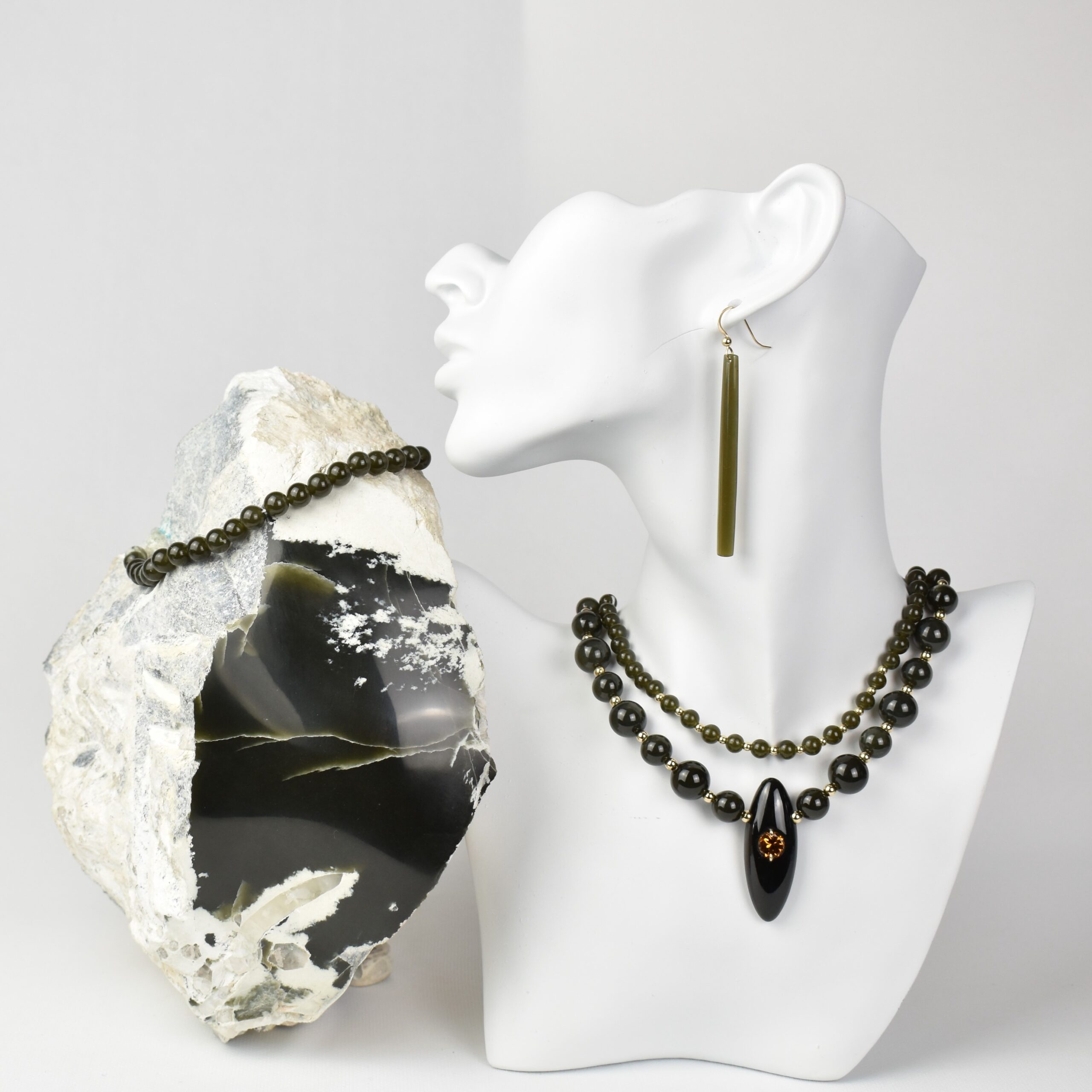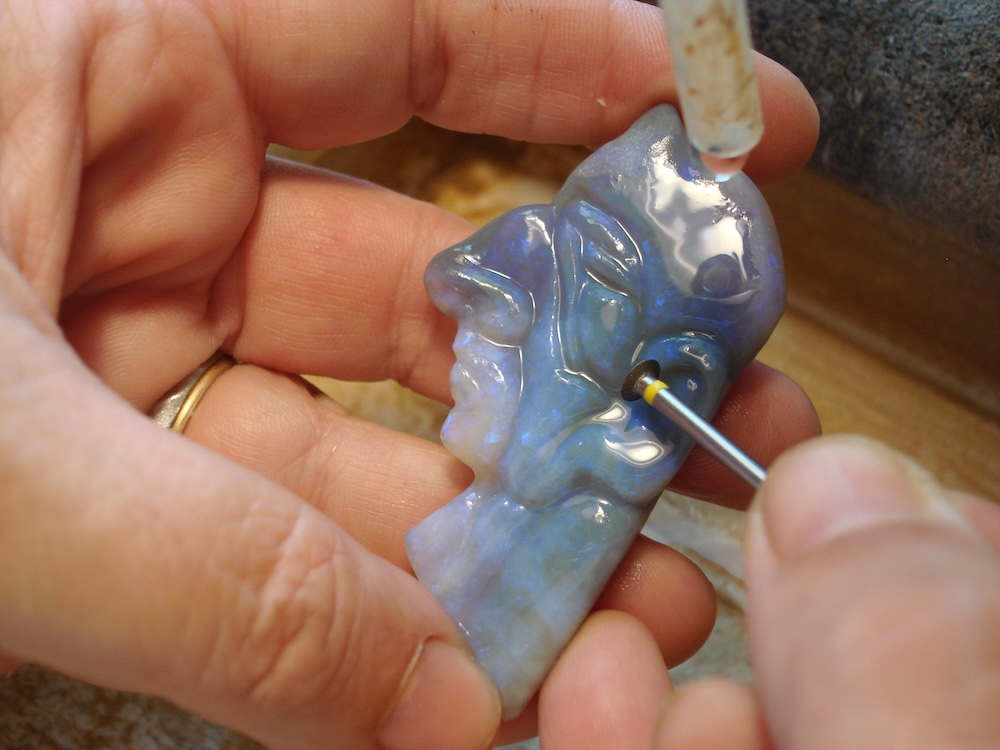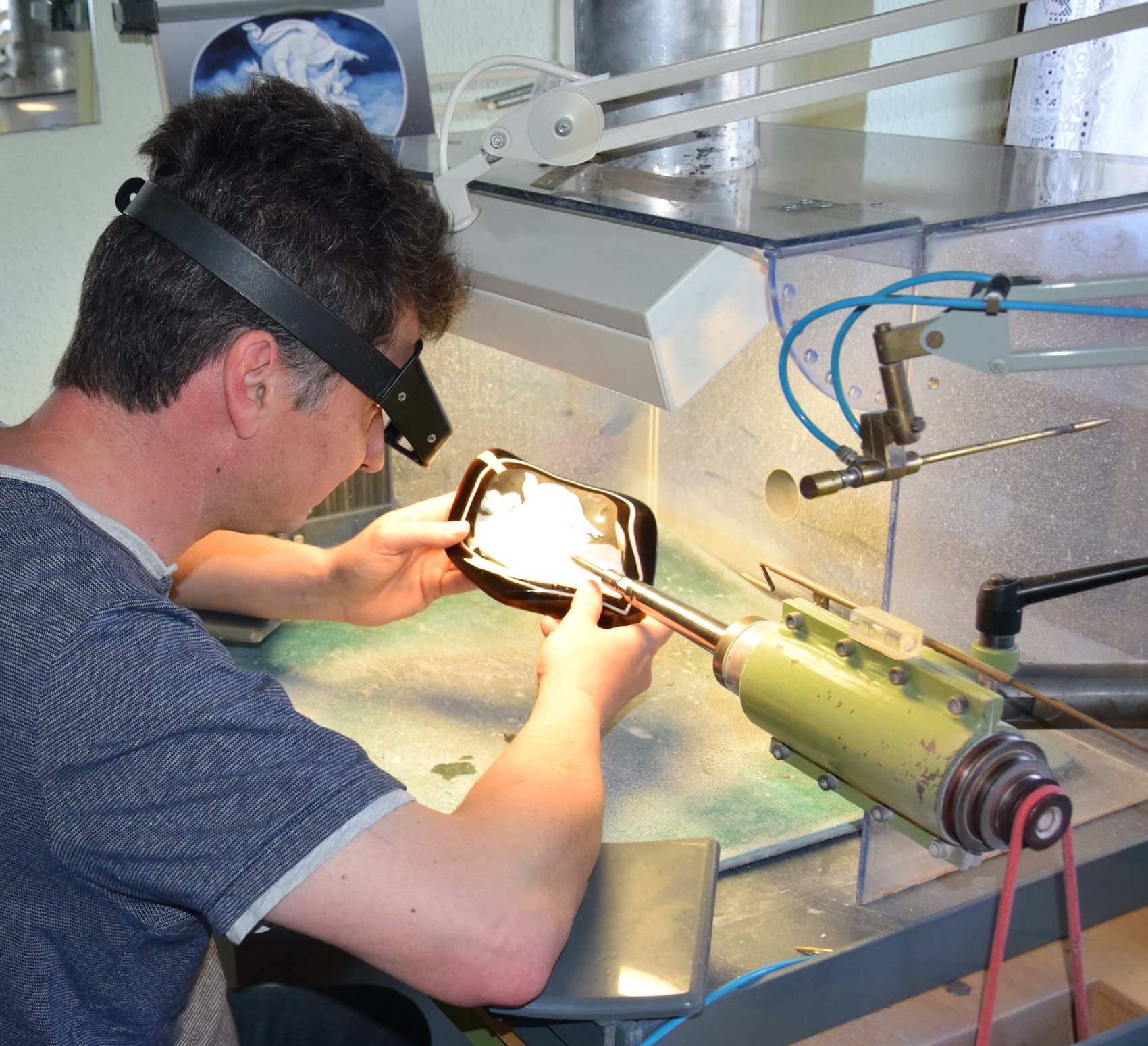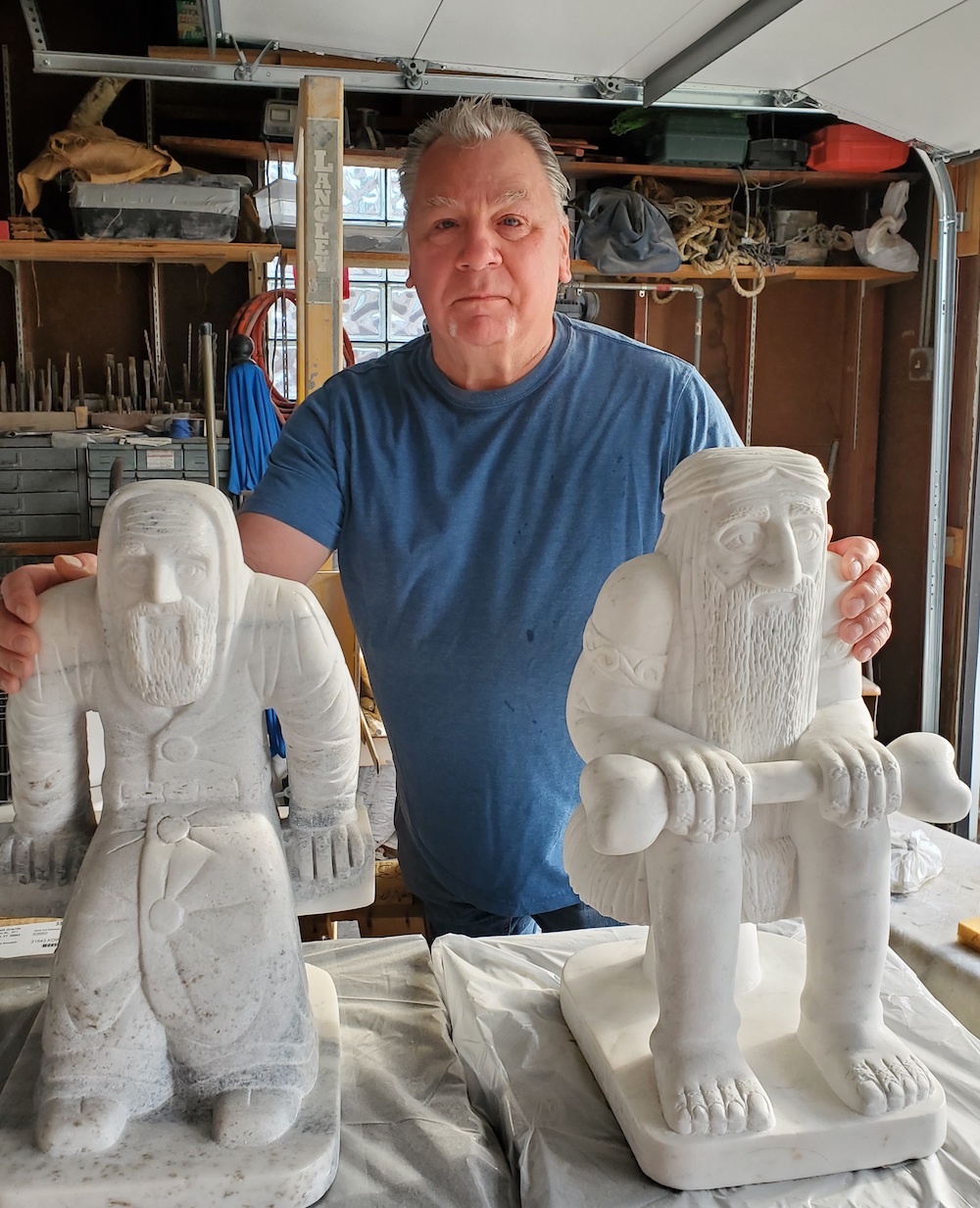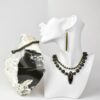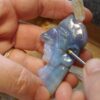
Ruyi literally means, “as you wish” in Chinese. The shape of a scepter is said to carry religious significance as a reminder of a lotus, the sacred flower in Buddhism. Some other scholars attribute its origin to the backscratcher in ancient China. The head of a scepter is usually an imitation of a lingzhi fugus, a traditional symbol of longevity in China. Ruyi scepters were often given as gifts because of the auspicious meanings they implied and were displayed either horizontally on stands or vertically in vases.
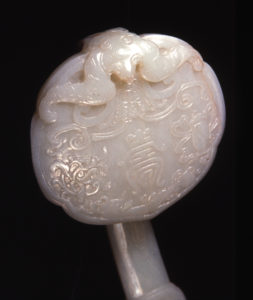
This nephrite Ruyi scepter shows the symbols of the eight treasures of Buddhism. Originated in India, the eight treasures became favorite Chinese decorative motifs after Buddhism was introduced to China in the 2nd century CE. A bat, a symbol of happiness in Chinese art, is seen on top of the round head. The character in the middle of the Ruyi head represents longevity. This Ruyi was likely someone’s birthday gift.
The symbols of eight Buddhist treasures could vary slightly on different objects, but they all bear similar characteristics as exemplified on the illustration.

The Wheel symbol of Buddhist doctrines, which lead to perfection;
The conch shell symbol of victory;
The Canopy symbol of attainment of enlightenment;
The Parasol symbol of Buddha as the universal spiritual monarch;
The Lotus Flower symbol of purity;
The Vase of Treasures symbol of the elixir of life or fulfillment of all wishes;
The Two Fish symbol of freedom from restraint;
The Knot of Eternity symbol of longevity.
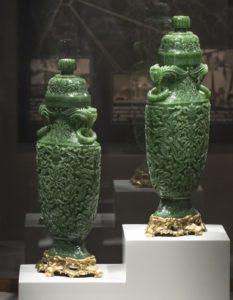
19th century, China
The eight Buddhist treasures are represented on other carvings in the Museum. When we re-open try to identify the symbols on other objects and appreciate how the lapidary artists creatively adapted the same motifs on objects of different shapes.

